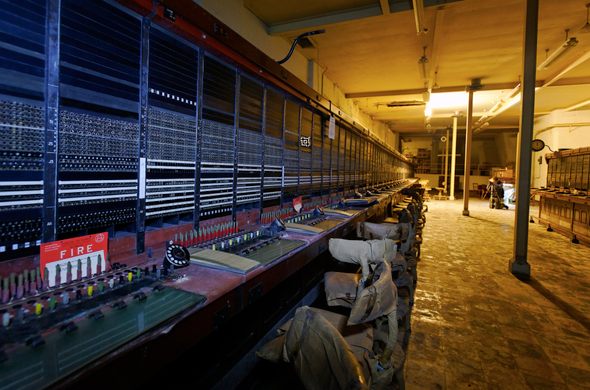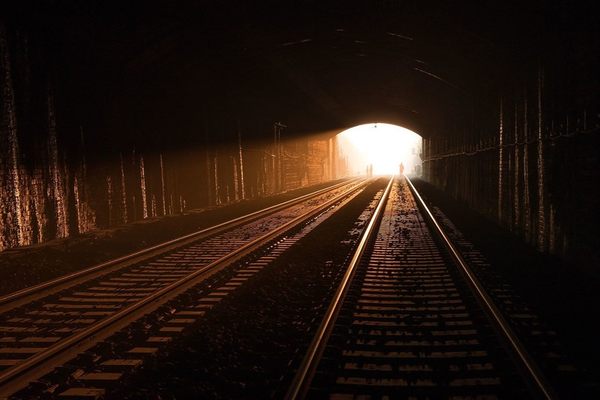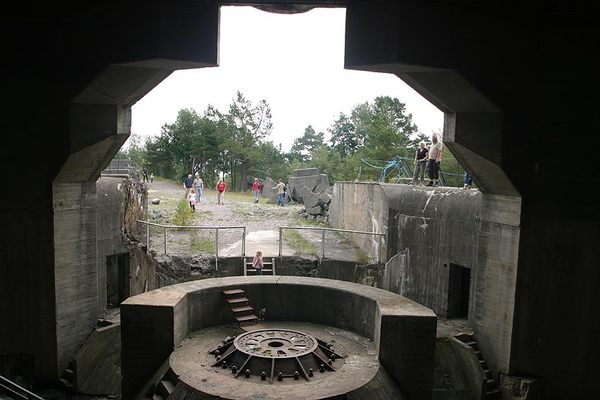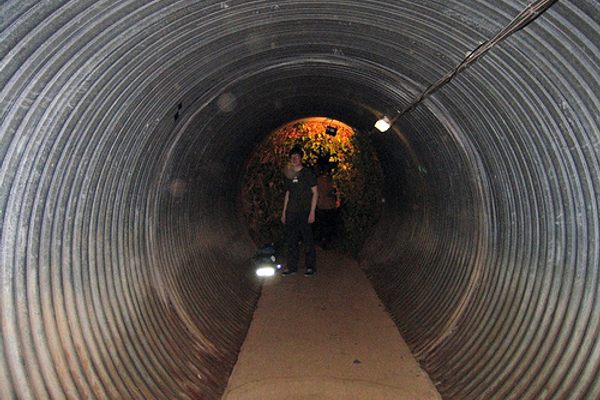Burlington Bunker
Below a historic English market town lies a secret underground city complete with kitchens, laundries, storerooms, and an underground lake.
In disaster movies, when the asteroid is hurtling towards earth, or the super volcano is about to blow, there is always a top-secret location where the president, government officials and top-scientists are whisked away to. Only big enough to support the most important humans, it is usually some sort of mountain, cave, or subterranean bunker made to support a few thousand folks for long enough for the radiation/dust/fire to clear.
In England, it just so happens that that location is real and located under a charming sleepy market town known as Corsham, Wiltshire. One hundred feet below the manors, churches and cobblestone streets is a 35-acre subterranean “Cold War City.” The reason this particular location was chosen for the bunker was its already-extensive system of limestone caves running under the city.
Built in the late 1950s this bomb-proof, radiation-proof, poison-gas-proof underground city was designed to house up to 4,000 Central Government personnel in the event of a nuclear strike. Not simply a bunker, this massive complex is over a mile in length and featured 60 miles of roads. It was designed to be fully self-sufficient and sustain its 4000 occupants for at least three months in complete isolation from the outside world.
The Burlington nuclear bunker, or just Burlington as it was code-named, contained among other facilities: offices, laundries, storerooms of supplies, a hospital, cafeterias, kitchens, a phone exchange (the second largest in Britain), a television studio where the remaining government could make public addresses, and even its own pneumatic tube system for speedily relaying messages throughout the complex.
The bunker is not all business, and is decorated with some murals painted by artist Olga Lehmann depicting the circus, prehistoric monsters, sports, sailors of bygone days and mermaids, and a controversial painting which appears to be a missionary padre being boiled alive in a cooking pot, surrounded by tribal people gnawing on bones! When they were painted in 1943 it was hoped these would add cheer to the underground environment. The complex (which was run on huge generators and had over 100,000 lights) was even rumored to include a pub called the Rose and Crown, modeled on the Red Lion, the iconic Whitehall tavern which was a favorite of civil servants. There are conflicting reports about the existence of this underground pub.
The bunker had a secret rail line coming off the main London-to-Bristol railway, so that the English royalty might escape to the underground city. Perhaps most impressively, Burlington features an underground lake meant to supply the occupants with fresh drinking water. It was even climate controlled and was to be kept at a constant humidity and heated to around 20 degrees C.
Kept absolutely top secret until it was decommissioned in 2004, the facility was never used, and boxes of government-issue glass ashtrays, lavatory brushes and civil service tea sets sit unopened and unused. Even though it was kept secret through the ’80s and ’90s it was already outmoded by then, as the time from warning to nuclear destruction was at that point a total of four minutes – not nearly enough time to evacuate to the bunker.
By 2004 the underground reservoir had been drained, the tanks had been emptied of fuel and supplies, and the complex was being run by a skeleton staff of just four. When the underground city was put up for sale a number of unusual possible buyers came in including a massive data storage site, the biggest wine cellar in Europe, a nightclub for rave parties, and appropriately, a 1950s theme park.
Community Contributors
Added by
Plan Your Trip
The Atlas Obscura Podcast is Back!


























Follow us on Twitter to get the latest on the world's hidden wonders.
Like us on Facebook to get the latest on the world's hidden wonders.
Follow us on Twitter Like us on Facebook